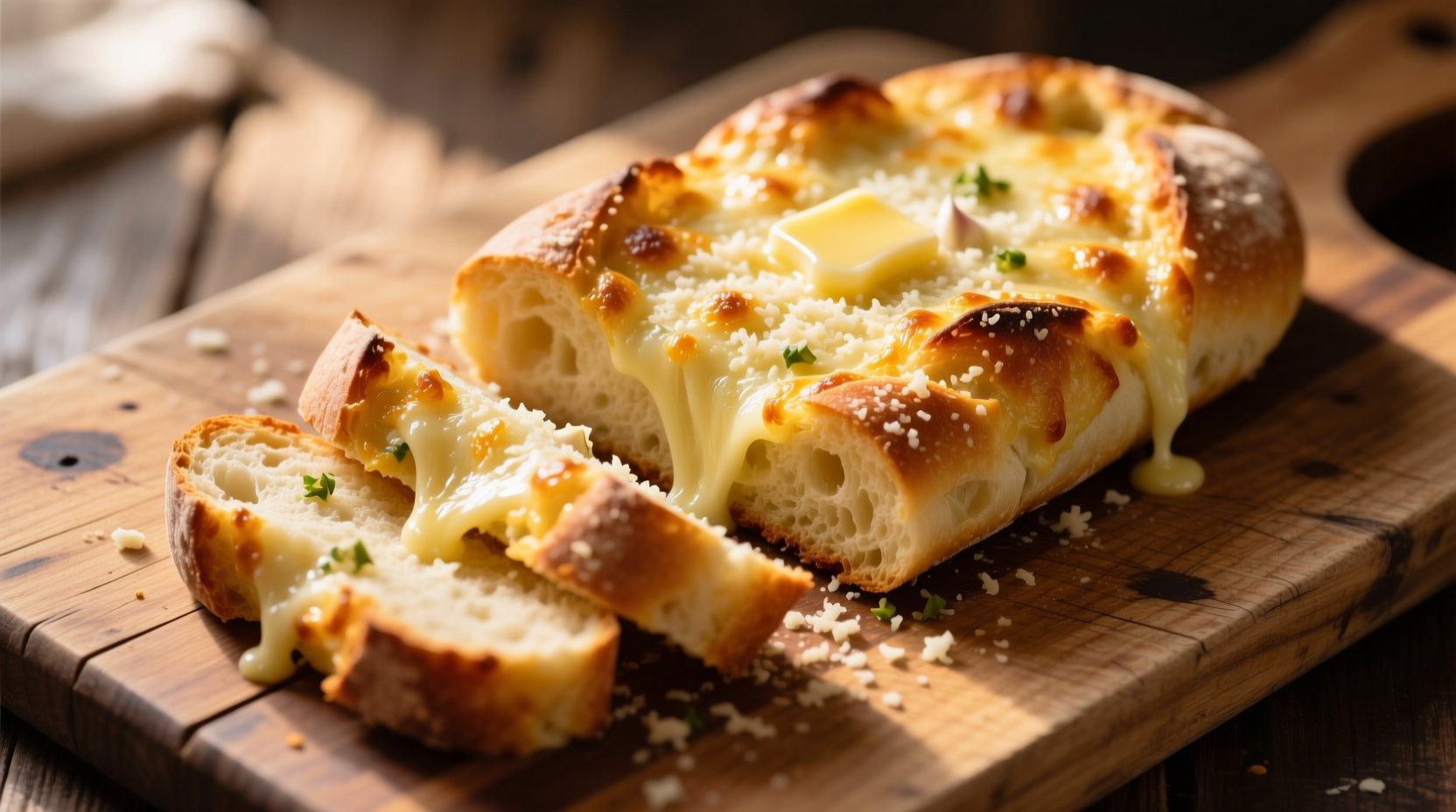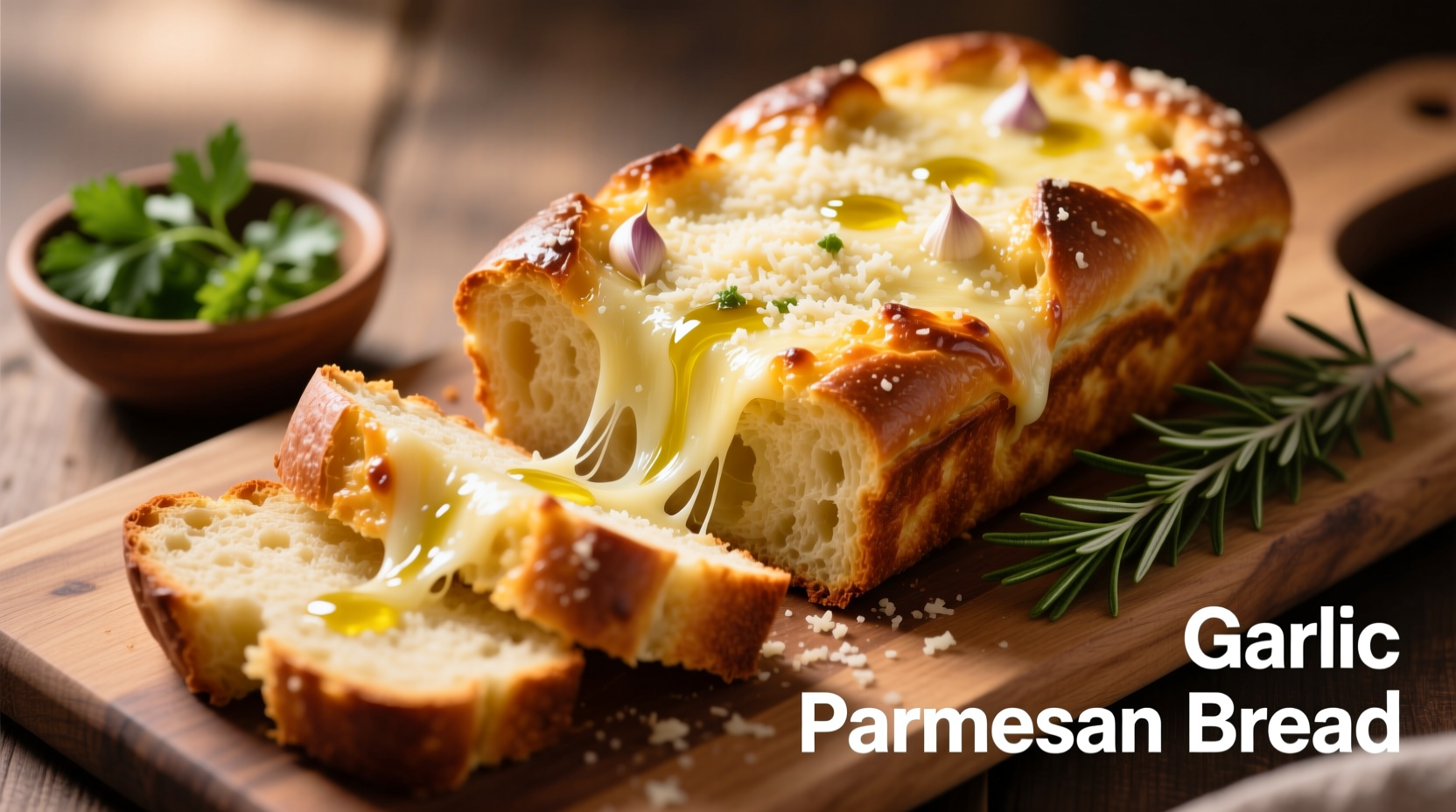Nothing transforms a simple meal like freshly baked parmesan garlic cheese bread. This beloved side dish combines the nutty richness of aged parmesan, aromatic roasted garlic, and perfectly melted cheese on a crusty bread base. Our comprehensive guide reveals the culinary science behind achieving that ideal crispy exterior with a tender interior every time.
The Evolution of Garlic Bread: From Humble Origins to Modern Favorite
Garlic bread's journey began in ancient Mediterranean cultures where olive oil and garlic were staples. Italian immigrants brought pane all'aglio (garlic bread) to America in the early 20th century, where it evolved with the addition of cheese. The modern parmesan garlic cheese bread emerged in post-WWII American-Italian restaurants, combining European tradition with abundant dairy availability.
| Era | Key Development | Regional Influence |
|---|---|---|
| Ancient Times | Roman soldiers rubbed garlic on bread for energy | Mediterranean |
| 19th Century | Italian peasants created pane all'aglio with stale bread | Italy |
| 1940s-1950s | American-Italian restaurants added cheese and butter | United States |
| Modern Era | Parmesan became preferred cheese for its umami depth | Global |
Essential Ingredients: Why Quality Matters
The magic of exceptional parmesan garlic cheese bread happens through precise ingredient selection. Unlike standard garlic bread, the cheese component requires careful consideration of melting properties and flavor balance.
Freshly grated parmesan (never pre-grated) contains no anti-caking agents that prevent proper melting. The USDA recommends using hard cheeses within 3-4 weeks of opening for optimal flavor and safety. Real parmesan (Parmigiano-Reggiano) contains natural glutamates that enhance umami without overpowering the garlic.
Garlic preparation makes or breaks your bread. Raw garlic burns easily while roasted garlic provides mellow sweetness. For perfect flavor distribution, mince garlic finely or use a press to create microscopic particles that distribute evenly through the butter mixture.

Step-by-Step Preparation Guide
Follow this professional method for consistently perfect results:
- Prepare the garlic butter: Combine ½ cup softened unsalted butter with 3-4 minced garlic cloves, 1 tablespoon fresh parsley, ¼ teaspoon black pepper, and a pinch of salt. Let sit at room temperature for 30 minutes to allow flavors to meld.
- Prep the bread: Select a quality baguette or ciabatta loaf. Slice horizontally without cutting all the way through, creating a 'hinge' for even filling distribution.
- Apply butter mixture: Spread ⅔ of the garlic butter inside the bread, ensuring coverage to the edges. Reserve remaining butter for the top crust.
- Add cheese layer: Sprinkle ½ cup freshly grated parmesan and ¼ cup shredded mozzarella in an even layer over the buttered surface.
- Wrap and rest: Wrap the loaf tightly in foil and let rest for 15 minutes to allow butter to penetrate the bread.
- Bake: Preheat oven to 375°F (190°C). Bake wrapped loaf for 15 minutes, then unwrap and bake 8-10 minutes more until cheese is bubbly and golden.
Contextual Application: When This Bread Shines
Understanding where parmesan garlic cheese bread performs best prevents culinary disappointment. This versatile side excels in specific dining contexts while falling short in others:
- Ideal for: Italian dinners, pasta nights, casual gatherings, and as a starter for wine pairings
- Less suitable for: Formal occasions requiring delicate flavors, dairy-free diets, or as a standalone meal
- Temperature considerations: Best served immediately after baking when cheese maintains perfect texture (140-160°F)
- Flavor pairing: Complements tomato-based sauces but overwhelms delicate seafood dishes
Pro Tips for Perfect Results
Avoid these common pitfalls that ruin otherwise promising parmesan garlic cheese bread:
- Burnt garlic: Always mix garlic with butter before applying to bread. The fat content prevents scorching during baking.
- Soggy texture: Don't skip the foil-wrapping step. This allows steam to soften the interior without making it mushy.
- Uneven melting: Use a combination of parmesan (for flavor) and mozzarella (for meltability) for optimal texture.
- Weak garlic flavor: Let the garlic-butter mixture sit at room temperature for 30 minutes before use to develop fuller flavor.
Variations Worth Trying
Once you've mastered the classic version, experiment with these chef-approved variations:
- Herb-infused: Add 1 teaspoon of fresh rosemary or thyme to the butter mixture
- Spicy kick: Mix in ¼ teaspoon red pepper flakes with the garlic
- Cheese alternatives: Try asiago for sharper flavor or fontina for creamier melt
- Garlic alternatives: Roasted garlic paste (3 cloves) for milder, sweeter flavor
Serving and Storage Guidelines
For optimal enjoyment, serve parmesan garlic cheese bread within 20 minutes of baking when the crust remains crisp and cheese maintains its ideal texture. The USDA recommends consuming cooked bread products within 2 hours at room temperature for food safety.
Store leftovers in an airtight container at room temperature for up to 2 days. Reheat in a 350°F (175°C) oven for 5-7 minutes to restore crispness - avoid microwaving which creates a rubbery texture.
Troubleshooting Common Issues
Encountering problems with your parmesan garlic cheese bread? These solutions fix the most frequent issues:
- Problem: Cheese isn't melting properly
Solution: Increase oven temperature by 25°F and ensure cheese is shredded, not in large chunks - Problem: Garlic flavor too strong
Solution: Reduce garlic quantity by half and add roasted garlic paste for milder flavor - Problem: Bread too dry after baking
Solution: Increase butter quantity by 1-2 tablespoons and reduce initial baking time by 3 minutes - Problem: Cheese burning before bread cooks
Solution: Cover with foil during first baking phase and add cheese only during the final uncovered baking stage











 浙公网安备
33010002000092号
浙公网安备
33010002000092号 浙B2-20120091-4
浙B2-20120091-4